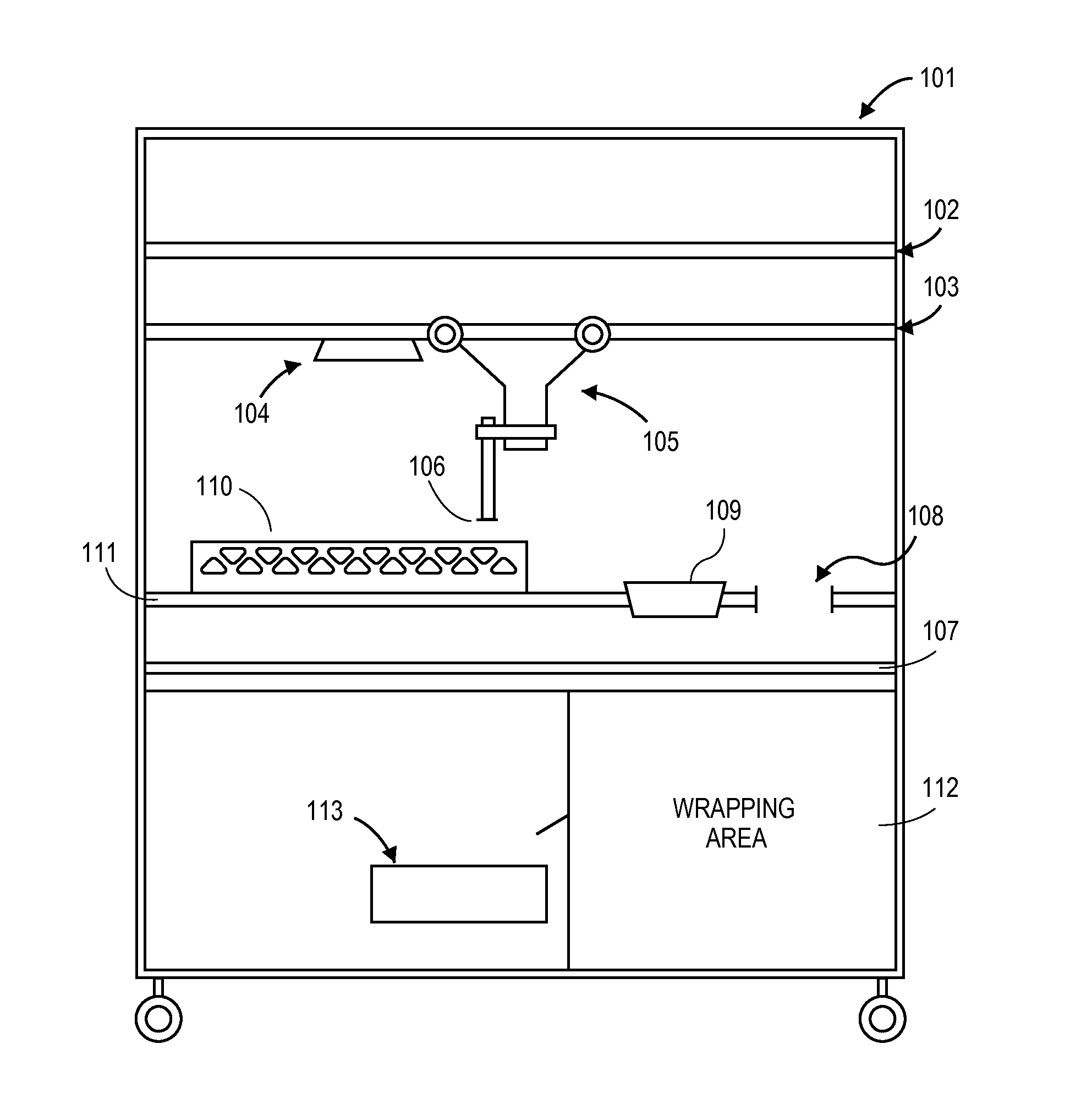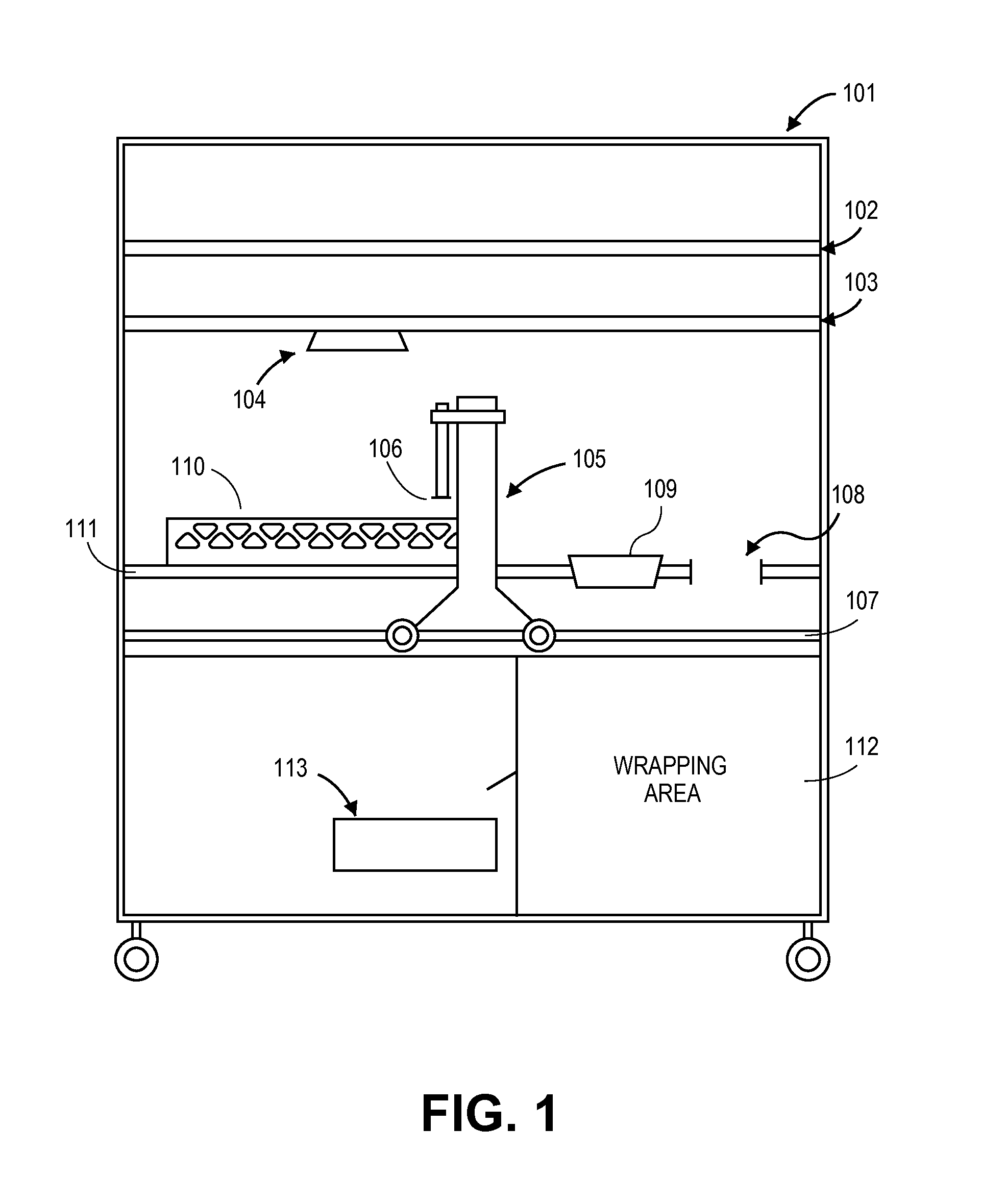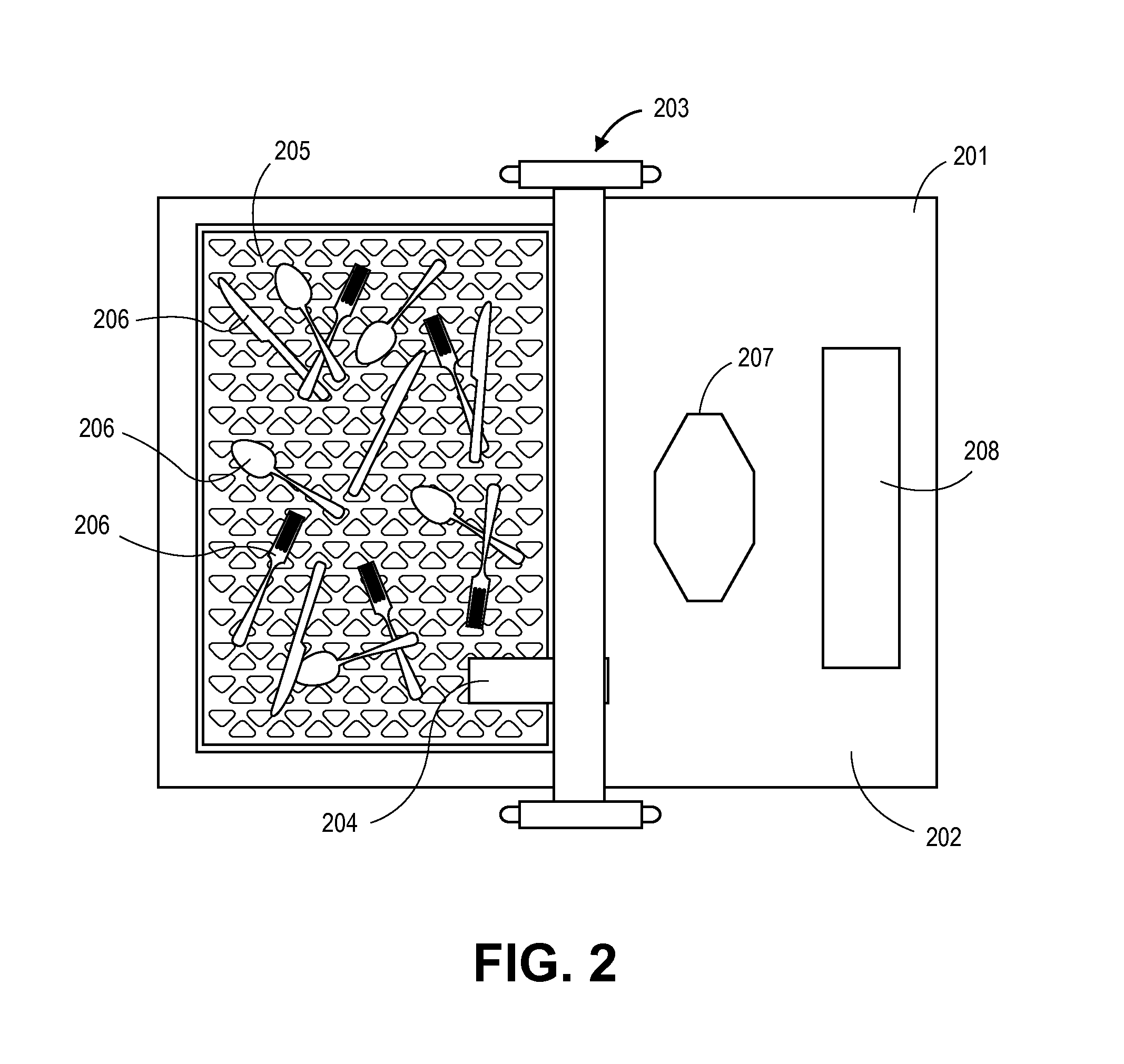Sorting apparatus and method
a sorting apparatus and sorting technology, applied in the field of electromechanical sorting systems, data processing systems, food service related machinery, can solve the problems of difficult to sort items of irregular or inconsistent shapes, different sorting apparatuses and/or substantial reconfiguration of hardware components, and the inability of mechanical equipment designed to process one style of spoon to work for another style of spoon
- Summary
- Abstract
- Description
- Claims
- Application Information
AI Technical Summary
Benefits of technology
Problems solved by technology
Method used
Image
Examples
Embodiment Construction
[0036]Exemplary embodiments will be described hereinafter with reference to the accompanying drawings, in which exemplary embodiments and examples are shown. Like numbers refer to like elements throughout. Other embodiments may be utilized, and other changes may be made, without departing from the spirit or scope of the subject matter presented herein. It will be readily understood that the aspects of the present disclosure, as generally described herein, and illustrated in the figures, can be arranged, substituted, combined, separated and designated in a wide variety of different configurations. Further, in the following description, numerous details are set forth to further describe and explain one or more embodiments. Although these details are helpful to explain one or more embodiments of the disclosure, those skilled in the art will understand that these specific details are not required to practice the inventions set forth in the claims.
[0037]FIG. 1 depicts the general layout ...
PUM
| Property | Measurement | Unit |
|---|---|---|
| suction | aaaaa | aaaaa |
| translucent | aaaaa | aaaaa |
| shapes | aaaaa | aaaaa |
Abstract
Description
Claims
Application Information
 Login to View More
Login to View More - R&D
- Intellectual Property
- Life Sciences
- Materials
- Tech Scout
- Unparalleled Data Quality
- Higher Quality Content
- 60% Fewer Hallucinations
Browse by: Latest US Patents, China's latest patents, Technical Efficacy Thesaurus, Application Domain, Technology Topic, Popular Technical Reports.
© 2025 PatSnap. All rights reserved.Legal|Privacy policy|Modern Slavery Act Transparency Statement|Sitemap|About US| Contact US: help@patsnap.com



